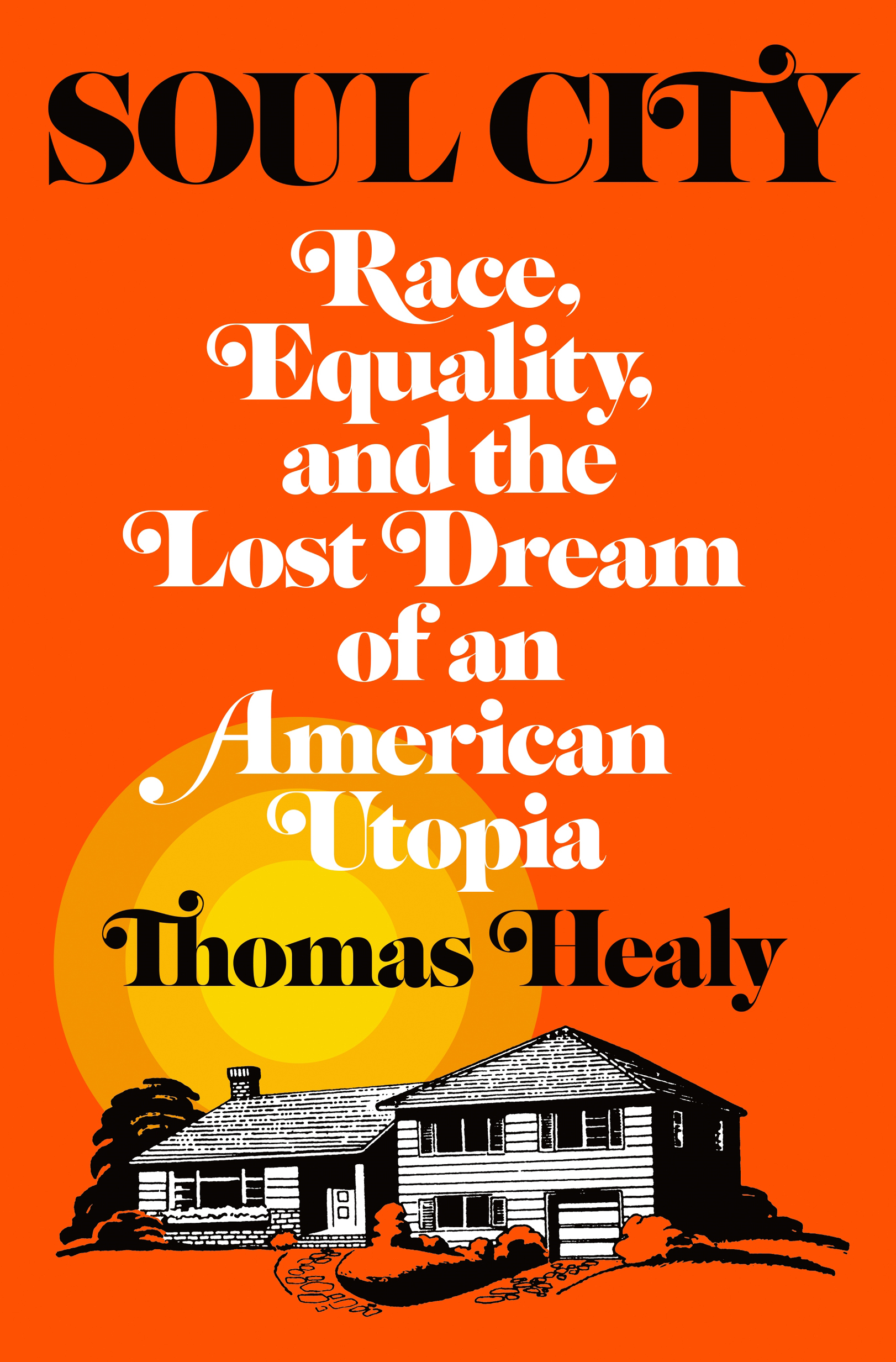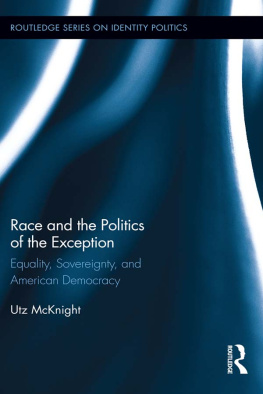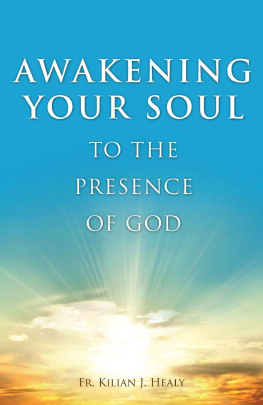Thomas Healy - Soul City: Race, Equality, and the Lost Dream of an American Utopia
Here you can read online Thomas Healy - Soul City: Race, Equality, and the Lost Dream of an American Utopia full text of the book (entire story) in english for free. Download pdf and epub, get meaning, cover and reviews about this ebook. year: 2021, publisher: Henry Holt and Co., genre: Politics. Description of the work, (preface) as well as reviews are available. Best literature library LitArk.com created for fans of good reading and offers a wide selection of genres:
Romance novel
Science fiction
Adventure
Detective
Science
History
Home and family
Prose
Art
Politics
Computer
Non-fiction
Religion
Business
Children
Humor
Choose a favorite category and find really read worthwhile books. Enjoy immersion in the world of imagination, feel the emotions of the characters or learn something new for yourself, make an fascinating discovery.

- Book:Soul City: Race, Equality, and the Lost Dream of an American Utopia
- Author:
- Publisher:Henry Holt and Co.
- Genre:
- Year:2021
- Rating:4 / 5
- Favourites:Add to favourites
- Your mark:
- 80
- 1
- 2
- 3
- 4
- 5
Soul City: Race, Equality, and the Lost Dream of an American Utopia: summary, description and annotation
We offer to read an annotation, description, summary or preface (depends on what the author of the book "Soul City: Race, Equality, and the Lost Dream of an American Utopia" wrote himself). If you haven't found the necessary information about the book — write in the comments, we will try to find it.
Thomas Healy: author's other books
Who wrote Soul City: Race, Equality, and the Lost Dream of an American Utopia? Find out the surname, the name of the author of the book and a list of all author's works by series.
Soul City: Race, Equality, and the Lost Dream of an American Utopia — read online for free the complete book (whole text) full work
Below is the text of the book, divided by pages. System saving the place of the last page read, allows you to conveniently read the book "Soul City: Race, Equality, and the Lost Dream of an American Utopia" online for free, without having to search again every time where you left off. Put a bookmark, and you can go to the page where you finished reading at any time.
Font size:
Interval:
Bookmark:


The author and publisher have provided this e-book to you for your personal use only. You may not make this e-book publicly available in any way. Copyright infringement is against the law. If you believe the copy of this e-book you are reading infringes on the authors copyright, please notify the publisher at: us.macmillanusa.com/piracy.
In memory of Margaret L. Healy
On a sweltering summer day in 1972, Floyd McKissick led a reporter for the New York Times across the green fields and red clay roads of an old plantation in his home state of North Carolina. Once a thriving tobacco farm worked by a hundred enslaved people, the estate had fallen on hard times in recent decades as tobacco prices sagged and the economy of the agrarian South collapsed. Tumbledown sheds and shacks now marred the landscape, while cattle from nearby ranches grazed the fallow pastures. But there were still signs of earlier prosperity, including a white eighteenth-century mansion resting on a small hill among a stand of cedars. Strolling in the shade of these ancient trees, McKissick looked up at the house, then turned to his guest and laughed.
I can just see ole massa now, he said. Up there on the veranda, fanning himself and watching us black folks slaving in the fieldand I cant help but wonder what he might say now.
What ole massa might have said is anybodys guess, but he would certainly have been stunned by the transformation taking place around him. Where Black men and women once toiled in bondage and despair, they were now engaged in an ambitious project to complete their emancipation: the building of a new city where Black people would have a majority share of power, capital, and opportunity. Named Soul City, the project was designed to be a model of Black economic empowerment, bringing money and jobs to a region that had been left behind by the twin forces of industrialization and urbanization. In the process, its supporters hoped, it would reverse the exodus of poor Blacks from the rural South and ease the overcrowding of the northern slums.
Launched by McKissick three years earlier, Soul City had at first seemed little more than a quixotic dream, another in a long line of Black separatist fantasies. McKissick, a lawyer by profession, had risen to prominence as head of the Congress of Racial Equality, one of the foremost civil rights groups of the 1960s. He was a fiery speaker, a tenacious litigator, and a visionary civil rights leader, one of the few remaining after the assassination of Martin Luther King Jr. and the self-exile of Stokely Carmichael to Africa. But McKissick had no experience building a city and nowhere near the resources to do so. And the site he had chosen was an unlikely location for an urban utopia: five thousand acres of tapped-out farmland in Warren County, North Carolina, one of the poorest areas of the country, where 40 percent of homes lacked indoor toilets and seven out of ten adults lacked a high school diploma. One-third the size of Manhattan, the site had none of the infrastructure a viable city needsno water or sewer systems, no paved roads, no electrical grid. And it was desolate: an hour from the nearest existing city, it lay in the middle of what one roadside billboard boldly proclaimed Klan Country.
Perhaps the biggest obstacle was the idea itself. Although Soul City was intended to be an integrated community open to all races, McKissick made clear that his primary goal was to help Black people, especially those who were poor or unemployed. For that reasonand because of its nameSoul City was quickly branded an experiment in Black Nationalism, a sort of domestic Liberia. This played well among advocates of Black Power, whose ranks and influence had grown sharply in recent years. But to many who had fought for integration, or at least come to accept it, Soul City seemed like a step backward, not forward. As one southern newspaper put it when McKissick announced his plans, in January 1969, How terribly tragic it would be should all civil rights roads cut in the past twenty years lead to Soul Citya Camelot built on racism.
In reality, McKissicks dream was about economic equality, not separatism. It is true that he had emerged as one of the leading spokesmen for Black Power and that his rhetoric was often divisive and inflammatory. If white America does not respond to peaceful protest, he wrote in his 1969 book Three-Fifths of a Man, Black People will be forced to work for their liberation through violent revolution. But he had also spent his entire life breaking down racial barriersfirst for himself, then for his children, then for the Black community at large. It was McKissick who integrated the University of North Carolina Law School in 1951. It was McKissick whose children integrated the Durham public schools in 1958. And it was McKissick who led nonviolent protests against segregated buses, lunch counters, dime stores, ice cream parlors, swimming pools, bathrooms, water fountains, and amusement parks for two decades, enduring taunts, beatings, arrests, and humiliations, all in the name of integration. Over the years, however, he had become frustrated by the failure of the civil rights movement to bring about sustained, meaningful change. Like many Black leaders, he had come to realize that marches and demonstrations, lawsuits and legislation, could only achieve so much. For Black Americans to be truly free, he believed, they needed powereconomic power, to be precise. If a Black man has no bread in his pocket, the solution to his problem is not integration, McKissick liked to say. Its to go get some bread. Thats why, although McKissick had no desire to exclude whites, his dream was to build a city where Blacks would call the shots, where a race of people who had once been bought and sold to enrich others would finally control its own economic destiny.
And despite the obstacles he faced, that dream was no longer fantastical. Just weeks earlier, the Nixon administration had awarded Soul City a $14 million loan guarantee (the equivalent of about $87 million today) to prepare the land for development. The loan was part of a fledgling program created by Congress to finance the building of new towns across the country, and Soul City was not the only project to receive support. So far, the Department of Housing and Urban Development had approved the building of eleven new communities, from a futuristic high-rise complex near downtown Minneapolis to an eco-friendly exurb outside Houston. But Soul City was the only project located in a rural area, far from a major metropolis, and the only one led by a Black developer. And federal support had not come cheaply. In return for the loan guarantee, McKissick had changed his party affiliation from Democrat to Republican and endorsed Richard Nixons 1972 reelection campaign. He would soon become the presidents chief Black spokesman, traveling the country giving stump speeches and raising money from Black voters.
It was a bizarre political union: Nixon, the law and order president whose southern strategy had exploited racism to win white votes, and McKissick, the militant Black leader who was under surveillance by the FBI. And it raised more than a few eyebrows, with conservatives questioning Nixons judgment and prominent Black leaders accusing McKissick of selling out. But like most political unions, it offered benefits to both sides. For Nixon, Soul City was a chance to improve his image among Black voters without risking his support among whites. Instead of embracing civil rights and an expansive welfare state, he could portray Soul City as a capitalistic solution to the problems of race and poverty. McKissick, meanwhile, desperately needed federal backing to get Soul City off the ground. Although he had secured private loans to purchase the land, investors were not exactly lining up to bankroll a speculative new town. If becoming a Republican meant he could get the money he needed for his dreamand show that Black people were capable of achieving something truly monumentalhe was prepared to take whatever heat came his way.
Font size:
Interval:
Bookmark:
Similar books «Soul City: Race, Equality, and the Lost Dream of an American Utopia»
Look at similar books to Soul City: Race, Equality, and the Lost Dream of an American Utopia. We have selected literature similar in name and meaning in the hope of providing readers with more options to find new, interesting, not yet read works.
Discussion, reviews of the book Soul City: Race, Equality, and the Lost Dream of an American Utopia and just readers' own opinions. Leave your comments, write what you think about the work, its meaning or the main characters. Specify what exactly you liked and what you didn't like, and why you think so.








